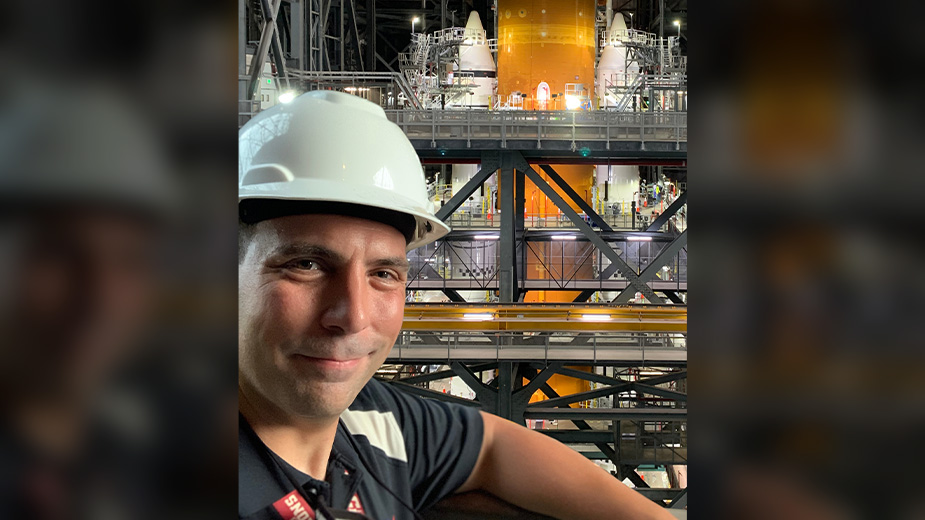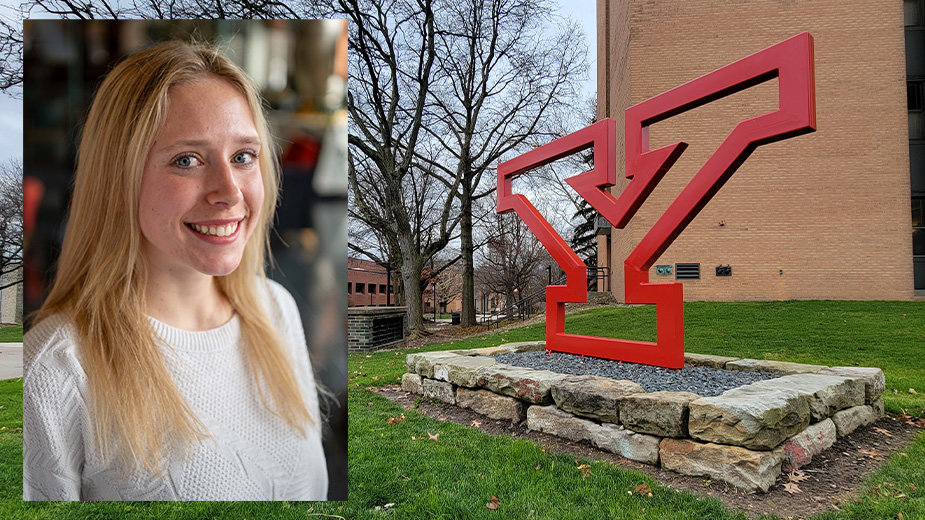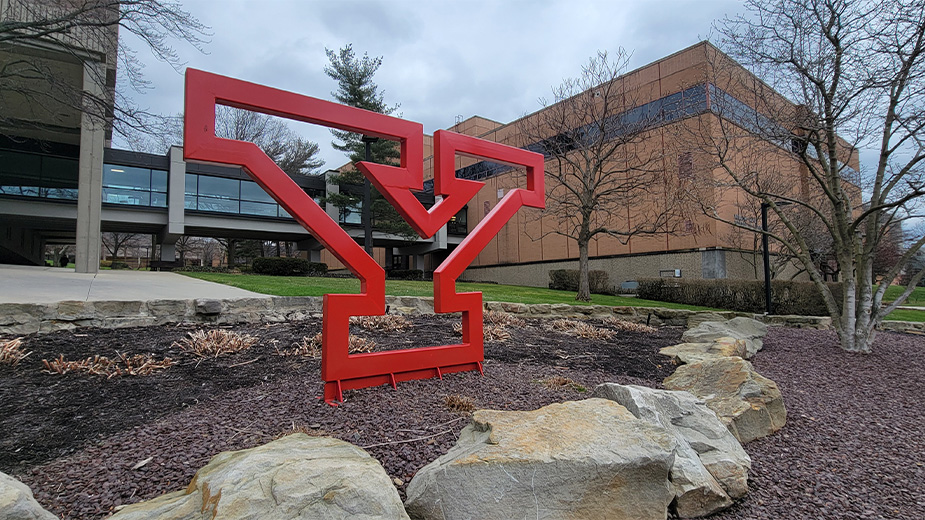NASA Aerospace Engineer Will Touch Down in Boardman
YOUNGSTOWN, Ohio – Nick Mastramico has always enjoyed overcoming problems and building things.
He developed this passion while growing up in Boardman, and it serves him well today as an aerospace engineer for NASA.
Mastramico will return to Boardman High School today to give a presentation to students and community members about the upcoming solar eclipse.
He’ll also discuss his work on NASA’s Artemis project – which will go to the moon and then Mars – and his own ambitious career path.
The lecture will start at 7 p.m. at the Boardman Performing Arts Center, 7777 Glenwood Ave. Admission is free, and the public is welcome.
Mastramico shed light on his upcoming visit and his career in a phone interview from NASA’s Marshall Space Flight Center in Huntsville, Ala., where he works.
How It Started
Mastramico traces his career’s start to a drafting course he took during shop class at Boardman Glenwood Middle School as a sixth grader.
It proved to be his personal launchpad.
“I was always building things with my dad, and that class got me interested in becoming an engineer,” Mastramico said.
“I didn’t know what kind of engineering at first, but I was always good at math and science.”
The real eureka moment, however, came in the summer of 1997, when he was between his sophomore and junior years at Boardman High School.
“I watched the Pathfinder lander touch down on the surface of Mars,” he said. “It showed the first color images from Mars, and from that moment on, I was hooked.”
Also in that moment, he realized what type of engineering he would specialize in: aerospace.
“I said I was going to build a rocket and go to the moon and then to Mars,” Mastramico said.
After 15 years at NASA, he can honestly say that he’s achieved the first goal, “and we’re working on the second one.”
Mastramico earned a bachelor’s degree in mechanical engineering at Youngstown State University. During his time at YSU, he completed an internship at NASA’s space flight center in Huntsville, Ala.
That was his introduction to the space agency. He kept the connection going by attending the University of Alabama to earn a master’s degree in aerospace engineering.
After graduating, Mastramico was hired by Jacobs Engineering Group, a major NASA contractor, also based in Huntsville.
After a few years at Jacobs, he was hired by NASA.
Mission accomplished.
Artemis Program
Mastramico’s team at the Space Flight Center is tasked with the structural analysis of the rocket being used in the Artemis program so that it can be built without flaw.
“We ‘build’ the rocket, and its components, with 3D modeling,” he said. The team factors in the metal properties and other constraints and variables, and then conducts flight tests.
This way, “we can know what the rocket will do without breaking it,” Mastramico said. “We can find out what its limitations are.”
The first flight in the Artemis project was in November 2022.
It went smoothly.
“It was the first launch of the rocket that will take us back to the moon and then to Mars,” Mastramico said. “It orbited the moon and deployed the space capsule.”
The craft then successfully returned to Earth and was retrieved.
The second Artemis flight is tentatively set for September 2025. Unlike the first flight, it will be manned. Carrying three American astronauts and one Canadian, the flight will orbit the moon but not land on it.
The third flight, set for September 2026, will land on the moon. Its goal is to deliver the first woman and the first person of color to walk on the moon, according to NASA.
The overarching goal of the space program is to have permanent settlements on the moon and possibly Mars. The shuttle and space station programs of recent decades have provided insight and practical knowledge about living in space, Mastramico pointed out.
If it all seems like the first steps toward what will be an incredible advancement for humanity, it is.
“We take science fiction and make it science fact,” Mastramico said. “A settlement on the moon will be a big deal.”
In Greek mythology, Artemis is the twin sister of Apollo. The Apollo program brought man to the moon in 1969, and Artemis will take it to the next level.
“We proved it’s possible to get to the moon in the ’60s, and since then we have been studying how humans can thrive in space,” he said.
Solar Eclipse
Mastramico was invited to Boardman High by the school’s Solar Eclipse Committee – a group of teachers and staff who are focused on the educational aspect of the astronomical event that will take place April 8.
The eclipse’s path of totality will cut through the heart of the Mahoning Valley. Youngstown is not within the path, but Niles and Warren are. To learn more, click HERE.
While Mastramico is not an astronomer, he does have a lot of insight to share.
A total eclipse is a rare phenomenon for any one spot on the globe; the next total eclipse visible in northeastern Ohio will be in about 90 years.
“It’s eventful, and an opportunity that I hope everyone takes advantage of,” Mastramico said. He took photos of the 2017 eclipse and will share them with the Boardman audience.
Another reason for his visit will be to show students that a career in the space industry can be within their grasp.
“I will be a bridge to the Mahoning Valley from the world of space flight and NASA,” Mastramico said.
“When I was going [to school in Boardman] 24-plus years ago, it wasn’t an industry that local students would think of working in. It’s not prevalent there,” he said. “I intend to [show students] that they can work in space flight.”
Although Friday’s lecture will be his first appearance at Boardman High, Mastramico has done teleconferences with members of the school’s science club in the past.
While working on the space program has been his life’s work, it’s not his only interest. Mastramico has a couple of side pursuits – and one doesn’t have to be a rocket scientist to appreciate them.
He is the author of “The Grey Ghost Stories (2017),” a series of tales about a throwback superhero.
Mastramico also puts his engineering skill to use in other ways. He created a replica of the Super Museum in Metropolis, Ill., out of 9,000 Lego pieces.
Mastramico donated the work to the museum, which has a collection of Superman memorabilia.
Pictured at top: Nick Mastramico is shown inside the Vehicle Assembly Building at NASA’s Kennedy Space Center. The rocket behind him was used in the debut flight for the Artemis program.
Copyright 2024 The Business Journal, Youngstown, Ohio.



